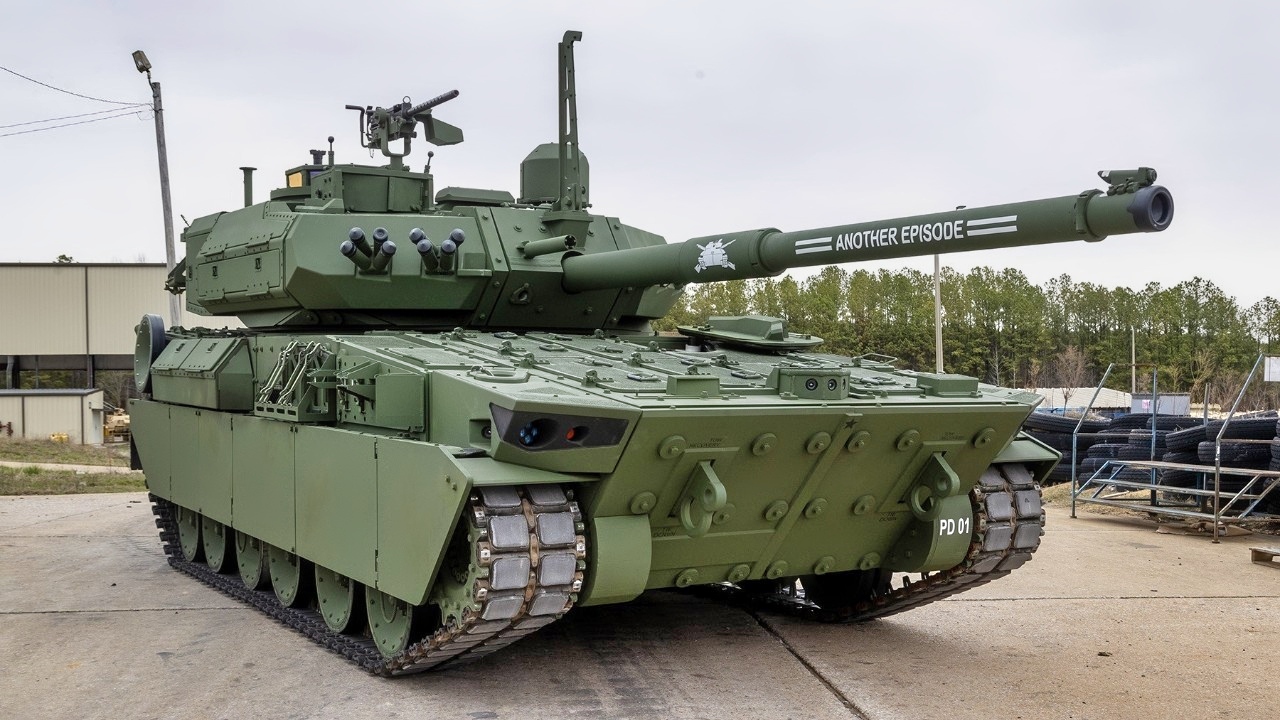Ever since its inception, the M10 Booker has been riddled with controversies. From arguments about its classification as an assault gun to concerns about its weight, the M10 has had alarm bells ringing in various defense circles.
In the most recent development, the Army now seems to have realized that something has gone wrong. At its training grounds in Fort Campbell, eight of the 11 bridges it crossed cracked under the weight of the “light tank,” making it too heavy for the Amy’s needs.
The M10 Booker seems to be the latest victim of a broken requirements process that is more concerned with checking boxes than actually evaluating the needs of the Army.
M10 Booker How Did We Get Here?
The development of the M10 Booker dates back to 2013 when the 2nd Airborne Division leaders told the Army they’d like a new light tank similar to the recently retired M551 Sheridan light tank. One of the requirements was that the new vehicle should be able to be airdropped from a C-17 or a C-130.
At this point, the Army should have taken a step back and reevaluated things. Airdropping from a C-17 is one thing, but nothing with substantial armor or firepower would ever fit inside a C-130.
Instead, the Army went forward with the project. In 2015, the Army Requirements Oversight Council decided the vehicle need not be loaded onto a C-130; in fact, it need not be airdroppable at all. At this point, another alarm bell started ringing. As Alex Miller, the Army’s chief technology officer, told Defense One, “as soon as you remove the requirement for airdropability, you’re no longer actually helping infantry. You are just as maneuverable as a main battle tank at that point, which means you are less maneuverable.”
Built on Outdated Requirements
Development on the Mobile Protected Firepower (MPF) project continued with outdated requirements from older eras. It was required to use the Single Channel Ground and Airborne Radio System, or SINCGARS, first fielded in 1990. The Pentagon has tried to replace SINCGARS, famously spending 15 years and $15 billion only to cancel the Joint Tactical Radio System program. The Army is still working on it.
Additionally, in 2022, the requirements were updated so that the M10 doesn’t need to have optionally manned or autonomous capability—a strange requirement considering the Army has been moving in favor of autonomous systems for some time now. “So now you have a vehicle that is the best idea of 2013, that has the best technology limitations of 2013—which are really technology limitations of 2000, because you’re trying to be backwards-compatible,” Miller said.
Stuck with a “Tank” the Army Doesn’t Need
Currently, it seems that the Army has no idea what to do with the M10 Booker. The doctrine, training, facilities, and other considerations required to onboard a new system hadn’t been finished yet. Nor had the National Environmental Policy reviews, “which normally take forever,” and the mobility reviews hadn’t been done either. All of this despite the fact that delivers were supposed to start this year.
Currently, the M10 is stationed at Fort Bragg, N.C., with the 82nd; Fort Campbell with the 101st; Fort Carson, Colo., with the 4th Infantry Division; and Fort Johnson, La., at the Joint Readiness Training Center.
However, these training grounds are meant for infantry and special forces units, whereas places like Fort Riley, Kansas, or Fort Cavazos, Texas are built for training with armored vehicles and tanks. “So now you’ve got divisions who can’t train on their systems. You’ve got systems that don’t actually meet any current needs, because they’re not airdroppable, and they require C-17s,” Miller said.
What to Do with the M10 Booker?
Currently, the Army has a contract with GDLS for a low-rate production of around 96 M10s, after which full production can begin.
However, the Army isn’t sure whether it will go through with this contract after all. After almost a decade of development, the Army finally realizes that the M10 is not the “tank” the troops need.
At the same time, the Army is also working on the M1E3 Abrams, a lightweight variant of the tank that fulfills more or less the same function as the M10 but with greater armor and firepower. The plan seems to be to get the M1E3 into production as quickly as possible to offramp the M10 without buying too many more.
The M10 Booker fiasco highlights how broken the requirements and procurement process is. Once the program started out with faulty requirements, the inertia was so strong that it took years before the Army was able to recognize the damage that was done and the dollars that were wasted.
Fortunately, it seems the Army is also learning its lesson, not wanting to repeat the mistakes of the Booker, with steps in place to ensure requirements are placed in the interest of the Army and reviews to ensure said requirements can actually be met.
About the Author:
Isaac Seitz, a Defense Columnist, graduated from Patrick Henry College’s Strategic Intelligence and National Security program. He has also studied Russian at Middlebury Language Schools and has worked as an intelligence Analyst in the private sector.










